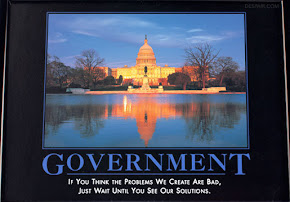If you want to understand how the free market operates when it comes to oil and gas, then this is a good article by the Institute for Energy Research.
Excerpt: Answer: Zero
Several investigations into alleged “price gouging” have concluded there is no evidence of any sort of illegal or inappropriate pricing activity.
After Hurricane Katrina, the FTC stated that it found “[n]o evidence to suggest that refiners manipulated prices through any means….”[1]
The FTC also noted that “if natural price signals are distorted by price controls, consumers ultimately might be worse off as gasoline shortages could result.”
In addition, the Washington State Attorney General released a report earlier this year on a lengthy investigation into gasoline prices that concluded: “This investigation did not uncover any illegal conduct in Washington regarding the pricing of gasoline during the period examined, 2000-2008.”[2]
Increasing taxes or imposing other punitive measures on American energy companies will not only do nothing to ease prices at the pump, but they could create more pain for consumers and increase our reliance on foreign oil.
The Nixon-Carter experiment with price controls led to long lines at the pump and higher prices for consumers.
Past laws imposing “windfall profits taxes” on oil companies were also a failure. As a CRS report on the topic stated the last time our nation imposed a “windfall profits tax” on American businesses, it “increased the demand for imported oil and made the United States more dependent upon foreign oil….” [3]
The answer to higher gas prices is to eliminate impediments to increasing the supply of crude oil.
Providing more supply to a tight global market will greatly help meet demand and is the best path to providing consumer relief. Market expectations that new supply will be coming online have alone led to oil price decreases in the past.
Estimates suggest 1 million barrels of oil a day could be produced from the Arctic National Wildlife Refuge (ANWR) . This equals about 10 percent of the oil America uses daily for gasoline consumption . The “1002 area” in ANWR was actually singled out in 1980 as a study area for its oil and gas development potential (P.L. 96-487).
In discussing the Outer Continental Shelf (OCS), CRS notes that “[a]nother 86 billion barrels of oil and 420 tcf of natural gas are classified as undiscovered resources. Congress has imposed moratoria on much of the OCS since through the annual Interior appropriation bills.”[4] This amount of oil represents about 33 percent of Saudi Arabia’s proven reserves (260 billion barrels).
Read full Institute for Energy Research report here.






























No comments:
Post a Comment